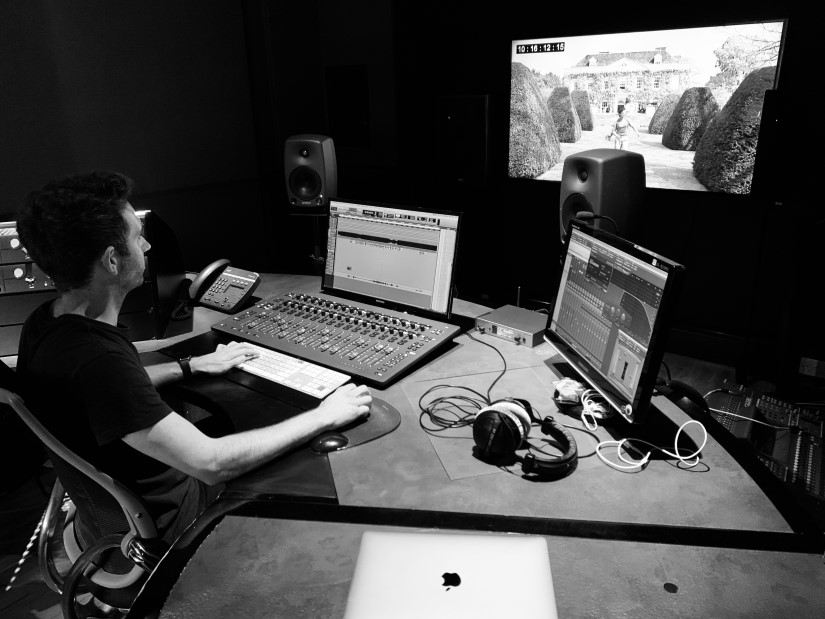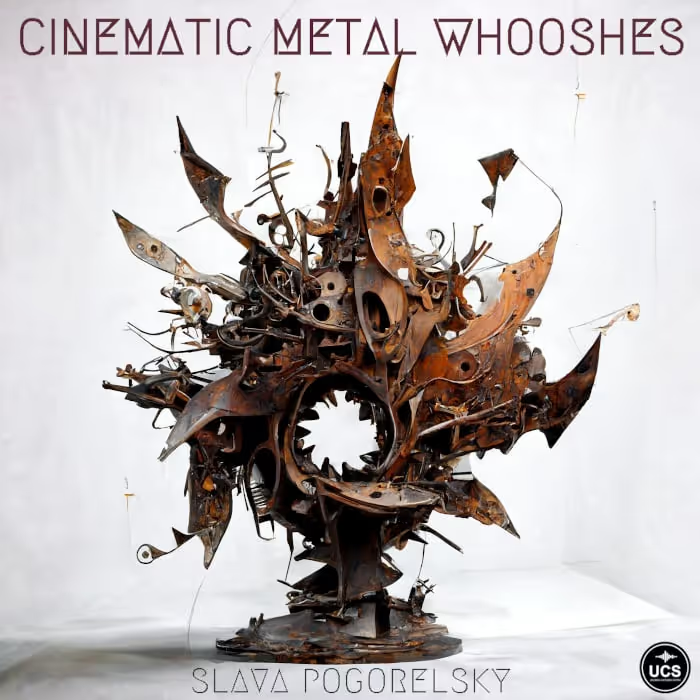We were curios to get the story behind his work - and thankfully, Ben Cross was excited to share the story behind his life in sound, and how the team captured such an impressive range of ancient combat sounds for that library:
The demo for the Ancient Armour & Weapons SFX library
Hi Ben, can you tell us a little bit about your background? What was your journey from learning to earning?
I’d always been interested in audio from an early age so knew I wanted to work in sound. I started off doing work experience at a radio station before getting into live sound engineering for bands and corporate events before working up to large venues and exhibitions. I did a BSc in Audio & Recording Technology at De Montfort Uni where I got introduced to the world of post production sound at Spool Post in Nottingham. They taught me the ropes and a wider understanding of how all the different disciplines of audio post work alongside each other. Whilst there I got to know the Foley guys at Universal Sound, and after moving back down south began doing some Foley editing for them before stepping in to cover mixing. Skip forward 8 years and I guess I’m now a fully fledged Foley Mixer!
Can you tell us about your Pro Tools/recording rig?
For Foley it’s pretty straightforward, we have Mac Pro’s running Pro Tools HDX, AJA video hardware, Focusrite Pre’s and have recently upgraded to an Avid S3. Our go-to mic choices are Sennheiser MKH60 and AKG C414 but also have a selection of lapels, DPA and water FX mics that we use if the occasion calls for it.
 What type of work are you doing with that set up, what kind projects are you working on?
What type of work are you doing with that set up, what kind projects are you working on?
At Universal Sound we’re set up solely for recording and editing Foley. We have 3 studios, one large theatre that caters mostly for feature films, and 2 smaller theatres that are mostly used for TV work.
We work on everything from big budget features like Disney’s Cinderella or Quantum of Solace to a large percentage of primetime dramas such as Victoria and Luther.
Can you tell us more about the recording process with foley artists and your workflow in the studio?
As all of us are in-house we tend to work in established pairs of recordist & artist which makes it a very quick and efficient recording process. I mainly work with Ian Waggott, an artist with 20 years experience.
Sticking a mic in front of a prop and recording it is easy, but our job is mainly about helping to convey the emotion of a scene by adding the right amount of texture and colour through the choices of sounds
His job is to use his magical skills of making the right sound you’re after out of random objects and my job is to capture that sound both cleanly from a technical view but also with the right perspective, depth and level so that it sits in the ’space’ of the scene. Sticking a mic in front of a prop and recording it is easy, but our job is mainly about helping to convey the emotion of a scene by adding the right amount of texture and colour through the choices of sounds. We have both close and room mics set up which are mixed live to achieve the effect we’re after. I also use a lot of live and post EQ to help shape and get rid of unwanted frequencies along with compression, transient shapers and declicking.
You’ve worked with both feature and episodic productions, is there a different approach you adopt when creating sound for a series compared to a feature film?
On the whole, not really. Especially in recent years where TV productions have soared in production quality, even what you would describe as a middle-of-the-road drama has extremely high standards and expectations. We always try to put the same level of care and effort in no matter what the job, the only distinguishing factor is budget. Usually on a feature film we can spend at least double the amount of time on it compared to a TV show, so we can go into much greater detail and generally spend more time refining the soundtrack.
What differences are there in the sound aesthetic you create for a comedy like Alan Partridge Alpha Papa or The Inbetweeners 2, compared to more hard hitting action films like Legendary or Rise of The Foot Solider 3?
Our job in Foley is to recreate all the human interaction sounds onscreen so it’s usually about getting the balance of realism and exaggeration right. For a comedy it may be more realistic on the whole with moments of over-the-top sound during a slapstick scene. Whereas an action film may be more pumped up to help compete with the louder sound effects and music and also to make characters sound more threatening or macho.
Can you share a few details on your work on the series Luther?
I’ve worked on a couple of series’ of Luther and it’s always a good show to be involved with. It has a good mix of action, horror and drama so we can have fun going to town with Idris’ big footsteps and getting messy with gore sounds during the more sinister scenes!
https://www.youtube.com/watch?v=mF0nkUHPG8c
The trailer for Luther
Can you tell us a little bit about your work on the series Fortitude?
Being set in the Arctic Circle meant we had to make sure we got our snow footsteps down! We ended up coming up with a system where Ian made a muted gravel surface that would be walked on to give the main body of the footstep.
Being set in the Arctic Circle meant we had to make sure we got our snow footsteps down
We did a second pass with the classic cornflour bag then added layers of real snow footsteps I had recorded to add variation and realism. Freshly fallen snow sounds completely different to day old snow.
You’ve just recorded a sound library with Output Audio. Can you tell us about the creative process behind those sounds?
We work closely with sound effects editors as our work often overlaps into their domain and can find that a lot of editors have their go-to libraries that have been used to exhaustion. I’ve worked with Nick at Output Audio in the past on computer games so when he approached me with the idea of creating the Ancient Armour & Weapons combat library it sounded like a fun project. We wanted to create not just the classic sounds of combat with swords, shields, spears etc, but also the sound of the character that’s using them to help the sound editor add definition and texture.
We wanted to create not just the classic sounds of combat with swords, shields, spears etc, but also the sound of the character that’s using them to help the sound editor add definition and texture
So rather than having a standard sword hit or bodyfall, you’ve got the movement of the coat of arms, swish of leather or impact of debris as layers to play with.
From experience I know that building up the layers of an army battle can be time consuming so we also recorded mass group tracks that can be layered together too quickly create the sound of large groups of fighters.
Have you got any recording and editing tips you can share with people looking to record their own foley in the future?
When recording Foley you need to have a good understanding of how putting a microphone in front of something changes it’s behaviour and also the technical ability to control what is being captured to get the desired result. When editing, along with ensuring that the sounds are perfectly in sync with the picture, it’s most important to focus on what you actually want to be hearing at any one point. You’re the first pass of mixing before it’s delivered to the dub stage so can help make decisions on what does and doesn’t need to be heard.
Is there any advice you wish you knew when you started out that you know now?
If you’re getting into the industry try and learn about and be willing to try as many jobs as possible as you’ll likely end up working in something you never set out for!





